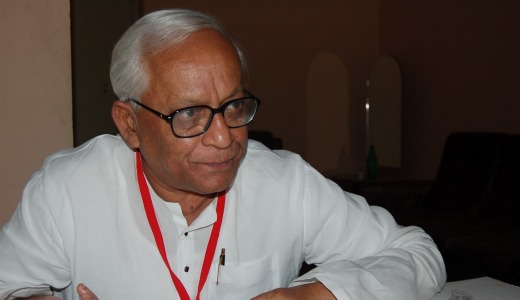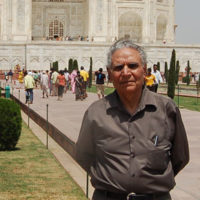
Two Communist-led states of India, West Bengal, with a population of 90 million and Kerala, with 30 million, are in the midst of tough elections.
Kerala is the southernmost coastal state of India. Elections for the state legislature’s 140 electoral districts were held on April 13. Results, withheld so as not to influence elections in four other states, will be declared on May 13.
West Bengal had its first phase of elections on April 18. Another four phases are spread over several days so that sufficient security personnel can be deployed to protect the polls. Maoist violence, in league with the anticommunist opposition TMC party and the federal ruling Indian National Congress party has created a serious law and order challenge. The Left Front, composed of the Communist Party of India, Communist Party of India (Marxist) and two smaller parties has ruled West Bengal for 35 years, in seven continuous five-year terms. The bourgeois opposition is determined to use all means to prevent another communist victory.
Kerala was the first state to elect a communist majority in the second election of independent India in 1957. The then undivided Communist Party of India held an extraordinary convention to formulate their resolve to strive for a peaceful transition to socialism, amending the party constitution for that purpose. The division of the party in 1963-64 into the CPI and CPI (Marxist), has not altered their course.
Since the first victory, the number of communist organizers has grown every year and every election, but the reaction to their good work by profiteers has also grown. Except for one five-year election cycle, won by the communists, the communists have alternated in power with the opposition.
This time, the Left Democratic Front and the rival United Democratic Front in Kerala mobilized 23 million voters to 20,578 polling stations. About 80 percent voted, and victory margins appear pretty narrow. By mutual agreement, the left grouping, led by CPI-M, is contesting 93 seats of the 140 and the CPI is contesting 27. Others have 13 seats. The UDF comprises the Indian National Congress for which the main ministers, led by the prime minister, canvassed for more than a month. They are in alliance with Muslim League Party in Kerala and some Christian minority-led parties (Interestingly, Christianity and communism both arrived in Kerala early in their development). Using religion against communists is done without qualms.
Predictably, managers of Christian schools mostly favor the Congress-led front, but the School Teachers Union has been affiliated with communists since 1957. Their leader was the first education minister of the communist government.
This time the UDF is claiming its right to alternate victory, and its leader, Chandi, is seeking to become chief minister, replacing the communist chief minister Achutha Nandan, who is still popular at age 87.
The UDF’s claims of a shot at victory are based on well-advertised differences between CPI-M’s state level party secretary his own chief minister. The central Politburo of CPI-M suspended the chief minister and state secretary from the Politburo as punishment, though the state secretary was reinstated later. There are complaints of CPI-M party organizers showing high handedness towards people and towards allied parties.
Nevertheless, the left front’s record of mass work and its record for state-run welfare is considered exemplary. Of India’s 35 states, Kerala is the only one with 100 percent literacy for both sexes. The vast numbers of party members and organizers have expertise in linkage of legislators to the people. This time the aggressiveness of the federal ruling party against communists is extraordinarily sharp, as the government’s majority at the national level has been under threat since the communists withdrew their support over the government’s strategic cooperation with U.S. President George W. Bush and the nuclear deal signed by India and the United States.
The communists in Kerala pioneered the system of state licensed subsidized food ration stores some 50 years back. Other states later imitated this system, but not whole-heartedly. Before the election of 2011, the poor were getting subsidized rice at a mere U.S. 2 cents (one Rupee) per pound up to 35 pounds per family of uncooked rice each month. They have had access to this help for at least five years. This time, only one week before the declaration of the election date, the communist-ruled state ordered the opening of these facilities to any citizen asking for it for next five years. The opposition condemned the move as bribe to voters on the eve of elections. The communist explanation, that this is not a new scheme, but an extension of old rule was not accepted by the state high court, though a lower court agreed and extended it. Now the ball is in people’s court. The opposition has effectively obstructed the flow of rice to the hungry. Chandi says he is not against the rice supply system but asks from where the funds are to come.
West Bengal had peaceful polls on April 18 and will have subsequent elections on April 23 and 27, and on May 3, 7 and 10. On May 13, the results will be counted. Of the 290 electoral districts the, left put forward 150 new faces. Incumbents with re-election difficulties were changed in party discussions. The ruling front dropped nine of its ministers to counter resistance of voters to incumbency and give chance to new cadre. The state has asked the central government to provide 100 companies of central reserve police to counter violence from the Maoists, a third subset of communists divided into numerous known and unknown factions who believe that power must emerge from the barrel of the gun. They are opposed to the CPI, and CPI-M and also the bourgeois state. But in West Bengal, to end the 35-year communist monopoly of elected power, the Maoists have joined hands with the opposition. Hundreds of communists have lost lives in terrorist violence by the Maoists, and voters are threatened. Immense resources have been tapped for the TMC opposition, which is the profiteer’s darling party and is an ally of the Congress Party, which is in national power.
The opposition has inflicted serious blows, defeating communists in local elections in West Bengal recently. But people in rural areas have affinity for the red flag. Sita Ram Yechury, leader of the federal communist parliamentary group, summarily declared, “Nobody can take Bengal from us communists.”
On May 13, 1611, the Red Fort in Delhi was built. On the same date in 2011, the red flag of the West Bengal communists might still keep fly, despite hostile winds, and raise an emerging hope for a new phase in the history of the left in India, and send a message for the world.
Image: Buddhadeb Bhattacharya, chief minister of West Bengal.










